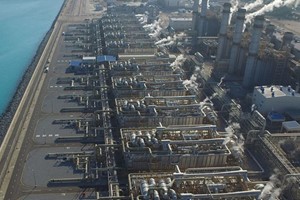The desalination of seawater is quite straightforward and does not require large amounts of energy. It uses special membranes with tiny pores to separate salt, bacteria, viruses and other impurities from seawater. These systems produce water suitable for drinking, while about 50% of the seawater entering a desalination plant is reclaimed by diffusers. The water is then treated and then pumped back into the ocean.
The process of desalination uses a brine heater to increase feed water temperature, and it can use heat energy from a power station or waste stream. The high temperature of the brine flows through evaporation chambers in stages one to ten. A demisting device allows the vapor to rise to the condenser coils during each stage. This condensed water is then fed away for further treatment.
A Seawater Desalination systems Plant works by separating salts and freshwater using high-pressure pumps. The pressure of these plants is 60-70 times greater than that of atmospheric air. The concentrated seawater is then pumped through a process that removes dissolved solids, bacteria, and other contaminants. Moreover, the process is highly efficient as the energy used to separate the salt and water remains with the seawater. This enables it to be recycled and reused, which significantly reduces the total cost of seawater desalination.
What do we offer Seawater Desalination Plant as Manufacturer and supplier?
Seawater desalination plants are becoming increasingly common as a source of water for coastal cities. These plants can provide water for more than a billion people. One of the biggest is currently under development in Southern California, and it is expected to have a capacity of 50 million gallons per day. Poseidon Water has made this technology more reliable than its competitors.
Desalination technology is growing in popularity as a solution for water scarcity. The oceans offer a solution to the problem and are becoming more common in many parts of the world. As demand for freshwater continues to rise, more desalination plants are being built. Most desalination systems are the same:
- An intake water system
- A high-pressure reverse osmosis system
- A post-filtration system
- An energy recovery device
Multi-Stage Flash (MSF) Distillation
The process of distilling seawater is called Multi-Stage Flash Distillation (MSF). This process uses several countercurrent heat exchanger stages to separate seawater from the other components. Some MSF facilities may have up to 30 stages. This process is more energy-efficient than traditional distillation processes and can produce high-quality products. However, the MSF technology has some challenges. For example, the equipment is often more complex than traditional MSF processes.
MSF technology can produce high-quality drinking water and other products at reasonable costs. Its capacity ranges from 4,000 to 30,000 m3/day. Its cost is relatively low, but it has limited application due to its energy consumption. Unlike other distillation technologies,
MSF is a versatile desalination process that uses multiple stages to clean water and distill it into a liquid. These processes are particularly suitable for applications where high-quality water is required. While conventional MSF is capable of producing pure brine, MSF-M can produce purer brines with higher purity levels. In addition, MSF is a much more energy-efficient solution for desalination.
The study involves a multi-stage flash MSF distiller with 20 evaporator stages and a capacity of 600,000 GPD. The objective of the study is to compare the performance of the system at 70% and 100% capacity. These indicators include specific cooling water flow rates and a performance ratio. Additionally, seasonal variations in the performance of the MSF are analyzed.














